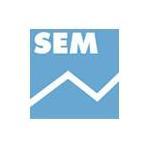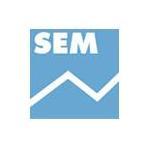 Author: Donald Jowdy, Suncoast Equity
Author: Donald Jowdy, Suncoast Equity
Covestor model: Suncoast Equity
Disclosure: Long ABT, GWW, NKE
The equity market leapt forward in the first quarter as the U.S., thanks to further evidence of an American economic rebound while the Euro Zone staved off a deepening crisis. The warm early spring weather may have added to the optimism of brighter days as the S&P 500 rose 12.6%. The Suncoast Equity Management portfolios rose 17.1% during the quarter and below we walk you through some examples of how our companies invest to achieve growth while generating above average returns. A few comments about our largest holding seem appropriate and we identify the companies that we own with truly global brands.
We own businesses that generate excess cash year in and year out. This abundance of cash allows our companies to invest in growth for future years. The areas of investment become apparent as we tour the financial statements, the balance sheet, income and cash flow sections. On the balance sheet, inventory is a current asset and producing the right amount and mix takes some effort.
Grainger’s (GWW) winning strategy in the recent recession called for an increase in product items or stock keeping units (SKUs) so that it could become more of a one-stop destination for its customers. Meanwhile most of its competition, especially “Mom and Pop” size suppliers, reduced their inventory to reduce working capital and survive the recession. The end result is that GWW picked up more clients and more share of wallet that is likely to result in permanent gains.
A shift to the income statement and we will find research and development (R&D). Investments in R&D can create exciting new products as well as yield competitive cost advantages and efficiencies. Nike (NKE) recently revealed its newest advance in a running shoe, a 5.6 ounce “Holy Grail” aptly named Flyknit that will hit stores in July.
More importantly, it will be manufactured with the invention of a new process, a computer guided technology (patent pending) that knits the entire upper part of the shoe in a single piece that is then attached to the sole. It is modeled after the same process that makes a sock or sweater. This will significantly lower the labor input and cost by reducing the number of sewn pieces to two from thirty-seven, as well as reduce material waste by 66%.
The lower costs have the potential to shift production back to local markets. At first blush, it would still cost more to manufacture in the U.S. than in Asia. But when you eliminate the shipping expense and add back the advantage of reducing time to market, the economics work to serve consumers in North America from manufacturing sites in the U.S. This new process could one day lead to custom footwear, whereby you visit the store, scan your foot and walk out a few minutes later with your perfect fit. This new technology could be a big hit from a revenue standpoint, the bottom line, and good for us as shareholders.
Marketing expenditures are also an expense category on the income statement and encompass wide ranging activities, including spending associated with getting the message about a product or service into the hands of existing and potential customers. Success in this category is complementary to creating a needed product or service in the R&D lab. In the past, the advertising component of marketing expenditures has been mostly one way – think TV, newspaper and magazines.
Therefore, the financial strength and size of the corporation determined the marketing reach. Marriott hotels might have had a national advertising campaign on network TV while a Bed and Breakfast located in the mountains of North Carolina might have advertised in a local Florida newspaper, hoping to attract residents looking to escape the summer heat.
The digital era is dramatically changing marketing spending for all companies large and small. The products and services in our daily lives enjoy so many interactive situations that it forces corporations to think and act in a much broader context. Google (GOOG) searches and reviews, Facebook’s “Like”, and Twitter’s headlines all impact product and service reputation and success. And this is just the tip of the iceberg.
As a shopper you can interact with the product and other users before you buy it. Snap a picture of an item that inspires you and use the eBay (EBAY) “Fashion Store” software application on your smart phone to locate similar fashions and accessories. As one of our recent additions to the portfolio, eBay’s enhancements in this area and to its Marketplace division are driving better results.
We lean on Nike once again as both a heavy user of this growth driver and a leader in the revolutionary change in marketing spend. At Nike, the days about hero worship and telling customers what product to buy are giving way to consumer-driven endorsements and feedback. Forging a tighter relationship with the customer by building and participating in online communities and by tracking user experience through social networks, a wristband or chip in a running shoe is now the key strategy in marketing. Go where the customer is going to be.
Advertising is still an important category and one of our recent portfolio entries, Discovery Communications (DISCK), is a beneficiary of the proliferation of distribution channels to send marketing messages. DISCK is a media company providing original and purchased programming over 120 networks in 40 languages and includes the Discovery Channel, TLC, Animal Planet and the History Channel.
Print is giving way to digital, be it a smart phone, a tablet, internet video, or TV accessing GOOG’s YouTube, Hulu, Netflix (NFLX) or a cable channel destination. As such, DISCK is helping its customers send messages alongside the content it creates to more than 1.6 billion viewers. It is a leader in non-fiction content and we look forward to Discovery’s contract renewals with cable and satellite companies in December of this year. The last agreements date back eight years and we are confident that the value and ratings DISCK has delivered since then will result in significant step-ups in pricing that will benefit us as shareholders.
We only touched the surface on marketing as a growth driver but did not want to miss covering the cash flow statement which includes capital expenditures (with Property, Plant and Equipment on the balance sheet – the receiving end) and acquisitions. Many of our companies have maintenance-like capital expenditures. We do not own capital intensive businesses that require heavy expenditures in this category, like a paper company or auto manufacturer.
Annual spending by our companies yield incremental boosts in productivity and efficiency over time. The improvements accrue to us as shareholders because our companies sell desired products and services and most cost reductions go to the bottom-line rather than pass through to the pocket of the customer.
Our companies have the resources to continually review acquisitions due to their inherent financial strength. This subject requires close scrutiny as “strategic” acquisitions tell you a story about whether management is leveraging its existing strength or whether they are making a decision out of weakness. In fact, we have sold companies from the portfolio specifically because of acquisitions we did not like. Mattel’s (MAT)purchase of The Learning Company well over a decade ago comes to mind, as well as some acquisitions Hewlett-Packard (HPQ) made which factored into our decision to sell it in the middle of last year.
In contrast, GOOG’s acquisition of YouTube (internet video), DoubleClick (display ads) and the company that led to the Android operating system, were additive over the last six years and good examples of building strength. The recent acquisition of Motorola Mobility (MMI) to add devices to the line-up may be less beneficial and perhaps says a bit more about these large businesses encroaching on each other’s turf.
Other recent examples that we have discussed previously include Grainger’s advantageous purchase last August of European-based Fabory Group in a down market and McKesson’s (MCK) acquisition of US Oncology which broadened the company’s Specialty Health business. When done correctly, acquisitions can add a great deal of value for shareholders.
A few thoughts about Apple (AAPL). For Suncoast Equity, the investment opportunity for any business breaks down into two parts. There is (1) business analysis and (2) price to value. Under business analysis, the company must meet our stringent criteria such as high return on capital, abundant free cash flow, and strong balance sheet. Through our analysis, we also try to confirm that the business will continue to perform and grow. Regarding price to value, are we getting a good deal and is the relationship between the current price and our estimate of intrinsic value favorable?
AAPL has become the talk of the town among both institutional and individual investors, the business media, the national press and the general public. We recognize the popularity but we focus on the investment opportunity, specifically the data points about its business and price to value. AAPL’s business success incorporates so many key facets, including its innovative products, supply chain execution, and customer service at retail stores that it will be a great teaching example at Harvard Business School for years to come.
One of the key drivers of AAPL’s increase in intrinsic value during the past four years has been the 50% increase in operating margin resulting from the surge in demand and strong pricing of the iPhone. Two recent developments may cause this sharp rise in operating margins to level out or perhaps decline. The first is business mix. The success of the iPad is a blessing and a curse, as it becomes a growing percentage of AAPL’s total sales.
The blessing is we have not seen any meaningful competition as it relates to important areas such as business, professional, medical and educational use. So we expect global sales and adoption of this desirable device to continue at a fast pace, as well as cannibalize the traditional PC market. The curse is the iPad’s dampening effect on Apple’s overall operating margins since it earns a gross margin of about 20%, far less than 55% for the iPhone. So although absolute profits will rise, margins and return on capital will suffer some.
All great businesses earning very high profit levels attract competitors and even business partners trying to dent or share in the success and capture their profits. That by nature is capitalism. A saber rattling of sorts is surfacing from the mobile phone carriers as they identify that their networks are at capacity and they need to charge customers more, especially those that use a lot of data. The carriers also would like to pay Apple less for the iPhone or charge the customer more for the subsidized handset. For now the phone companies can’t do without this product. They would lose too many customers and Apple does provide its prior version iPhones at a reduced cost. We will keep our eye on the pricing trends for the iPhone and the issues for the industry overall.
Looking at the positive global picture, China is the world’s largest mobile market by number of subscribers and it is Apple’s second largest market by sales, after the U.S. Yet China Mobile (CHL), the country’s largest mobile operator, does not officially carry Apple’s iPhone. The two are currently in talks as China Mobile migrates to 4G technology which can handle the advanced technology of the iPhone and could provide another leg of growth for AAPL.
Apple will continue to command headlines due to its popularity, success and because it is the largest company by market capitalization. The takeaway is that we will be attentive to data points and business valuation. Warren Buffett summed it up best, “You are neither right nor wrong because the crowd disagrees (or agrees) with you. You are right because your data and reasoning are right.” We will take care in managing this important position as we do with all our holdings.
Estimates by more than one source declare that over a billion people in the developing world have escaped poverty over the past two decades. This is clearly a remarkable achievement. Although there is some concern that growth in the emerging market economies may be slowing, citizens of these nations consume an expanding array of products and services that benefit the rest of the world. In particular, our companies whose brands have truly reached global status should lead the way.
AAPL, NKE and Visa (V), which make up over 20% of our portfolio, are world class and fit this mold. These three companies’ true business success over the last few years has been somewhat underestimated by us, and for sure by many others. But we always knew they were operating on an instant global stage versus other businesses during similar growth stages in the 1980’s and 1990’s. Our other portfolio holdings have global brands within a niche you may not recognize from the corporate parent name, but play out equally well worldwide such as General Dynamics’ (GD)Gulfstream G-series private jets.
On the other hand, some businesses have strong name recognition but have products that don’t travel well, such as Hershey (HSY) chocolate where it is more of a local taste. We have identified and are keeping a close eye on a few other businesses that enjoy global benefits like our holdings. We patiently await a favorable investment opportunity.
In spite of the price gains experienced so far this year, we continue to believe that equities offer better relative long-term value than high quality fixed income investments such as Treasury notes, bonds and AA corporates. It is important to be selective and to have the SEM-DIS (Disciplined Investment System) to seek out quality and value. Our process should serve us well as the journey remains a bumpy one and as the economy continues to work towards recovery. We welcome your call at any time and continued thanks for your support.



